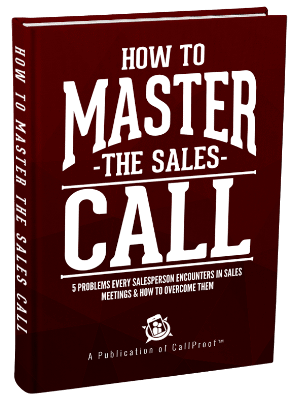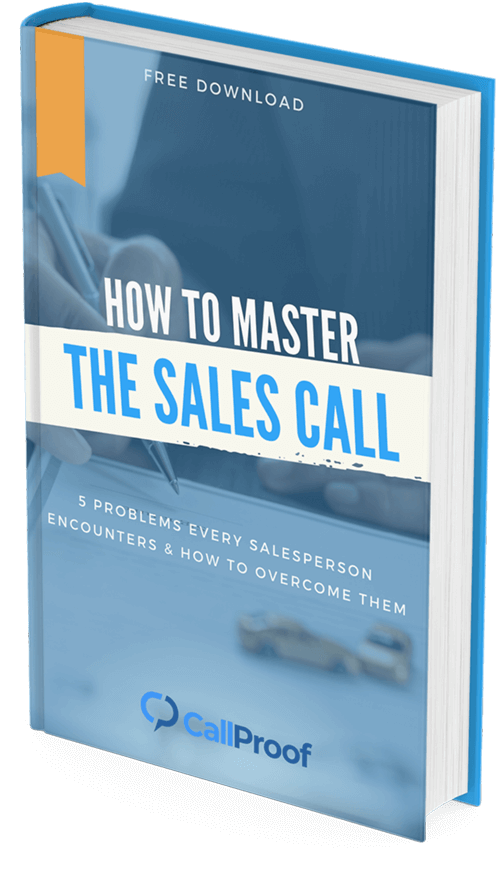Did you know it took the US about seven years longer than Europe to catch onto texting? It gained momentum in Europe in 2001, and quickly became a popular alternative to calls.
But in the US, text messaging didn’t take off until 2008. With the growing popularity of the smartphone, namely the iPhone, texting skyrocketed.
Today, texting is the #1 used app on the smartphone worldwide. In fact, no one even thinks of it as an “app”. It’s not a bonus — it’s an essential.
But are salespeople taking full advantage of texting? Not even close.
In most sales scenarios, salespeople deal with the buyer’s discomfort. In any good sales process, the salesperson builds rapport, the buyer begins to like them, and they become friends. But maybe the price is too high, or the products don’t seem to fit their needs. Now the buyer feels uneasy because they don’t want to give their “friend” (the salesperson) bad news. For most people, telling someone you like that you don’t want to buy from them creates an uncomfortable conversation. So the prospect often avoids the conflict by avoiding the salesperson altogether.
In this scenario, salespeople end up in a cycle:
1. Build rapport with the customer.
2. Ask pre-qualifying questions.
3. Propose a solution via email or hand-delivered proposal.
4. Silence.
In the end, they’re left without a sale and without a reason why.
How Salespeople Can Use Text Messaging
The text message gives people a more comfortable way to communicate. Building a relationship with your clients via text opens a channel of communication where they can more quickly respond and more easily deliver objections.
The secret? Text from the beginning. Here’s how to build this communication channel from the start.
Begin the text conversation with an appointment reminder. Confirm the appointment and include the address so there’s no question where you’ll be at what time.
After your first meeting, text a follow-up message. Summarize the meeting and reaffirm any promises you made during your conversation.
Start the text relationship before you get into the groove of emailing. If you wait to text until you need a response to a proposal, that’s uncomfortable. They’re not used to you texting — it’s a “stranger” text. But if the relationship exists prior, texting can be your secret weapon.
Related: 3 Ways to Integrate Text Messaging Into Your Customer Service
The purpose of the texting relationship is to better move sales through the sales funnel. You’ve built the rapport, asked the sales questions, developed and proposed a solution, but you haven’t closed the sale. In many scenarios, this is where the sale falls flat. What comes between the proposal and the close? Negotiation.
If the customer isn’t talking to you, it’s likely an issue of product, price, or prior relationship. Texting makes it easier for them to communicate these objections. So ask for feedback via text. Be direct and be brief.
Your message may say, Mr. Jones, it was great meeting with you last week. I sent you the proposal on Friday, and I would love to get some feedback. How can we move forward?
Now you’ve opened the door for him to communicate his objections and to start negotiation if he’s still interested.
Short and sweet texts can be your golden goose for moving sales through the funnel. But they won’t work if you don’t play by the rules.
The Golden Rules of Texting
1. Save Emojis for Friends
Anyone talking to the opposite sex faces a challenge in texting. Save emojis (and selfies) for your friends. Texts can appear more friendly than you mean, so play it safe and steer clear of the pics.
2. Keep It Strictly Business
Don’t veer off topic or add flirtatious comments. If you receive a message that’s inappropriate, it’s best not to respond.
3. Keep It Short and Sweet
As you message your busy prospects, focus on the facts. Don’t use text messages as an opportunity to build rapport. You’re searching for facts, so get to the point. Texts don’t need the introductions you’d include in an email.
4. Be Aware of WHEN You Text
Consider the person you’re texting and their normal business hours. It’s best to message them after they’re up, but before they get into their work day. So for people with typical hours, text between 7 and 9 a.m. For someone with night hours (like a restaurant manager), texting around 3 p.m. may be better.
Regardless, avoid early-morning or late-night texts. Most people don’t turn off their notifications, so respect their time.
5. Avoid Abbreviations
You may know all the trending abbreviations, but your prospect may not. So don’t use them. People shouldn’t have to decipher your message, so avoid abbreviations altogether. Steer clear of even the most common acronyms (such as LOL or TTYL) to keep your message as clear as possible.
6. Add Product Pictures
Depending on your product, a picture may communicate better than words. If you’re selling cars or a hot, new product, send a picture. A glimpse of your product will be much more enticing than any description you’ll write.
7. Respond in a Timely Manner
95% of people read their texts within five minutes of receiving them. The average response time is just 90 seconds. So when you get a text, don’t over-think it. Respond quickly.
Ways to Use Texting With Text Templates
1. Follow-Ups
Whether you’re following up with a new potential client or a prospect that’s been in the funnel a while, text messaging can be a great way to stay on their radar. Use one of these templates to touch base:
First Follow-Up
“Hi John! This is Prat with Absolute Wireless. We talked about looking into Sprint for the best possible deals for your cell phone service. Please let us know your availability, and we will reach out to schedule an appointment to get you saving sooner!”
“Hi John! This is Prat with Absolute Wireless for Sprint. I’d like to work with you like we discussed earlier for the best possible cell phone plan to fit your needs. Please let us know your availability, and we will reach out to schedule an appointment to get you saving, sooner!”
Second Follow-Up
“Hello again! This is Prat with Absolute Wireless for Sprint. I am touching base regarding an appointment to help you switch over to save more. I’d be happy to send you home with a phone accessory without any obligation just for stopping by our store to explore your options. Thanks!”
“Hello again! I am touching base regarding your appointment with Absolute Wireless for Sprint to save you more on your service bill for your cell phone. Could I give you a quick call this week to follow up on your options?”
2. Automate Monthly Follow-Ups
To make following up even easier, use an app (or your phone’s built-in feature) to automate texts. So, if you’re thinking about work late at night or prepping when it’s not appropriate to text, write a batch of texts to send later. You can even schedule your messages months in advance.
Related: Follow-Up Emails: When Should You Stop Pursuing a Prospective Client?
3. Ask for Referrals
Texts offer a great way to ask for an introduction while your phone number is easy to access. LinkedIn messages often go unnoticed. So use the network to find connections, then send a text. When you see a connection between a client and prospect on LinkedIn, ask for the referral via text message. Then they’ll see your number and hopefully forward it to their contact.
“Hi John! I saw that you work with Sarah from Sprint on LinkedIn. Would you be willing to introduce me? I’d love to offer her the same great service we provide for you. Thanks!”
4. Send Happy Birthday Wishes
Use your social networks to find clients’ and prospects’ birthdays. Then send a message on their big day. So you don’t forget, set these up to send automatically. You can even offer an incentive as a birthday gift:
“Happy birthday from Team Absolute Wireless and Sprint! Best wishes on your special day. Respond to this text within 7 days to learn more about birthday incentives for our customers.”
5. Confirming Appointments
Like we mentioned earlier, text messages eliminate the questions of where and when before an appointment. Sending the address and the time assures the customer you’re ready to meet them.
“Hi John! This is Prat with Absolute Wireless and Sprint. It was great speaking with you recently. I am confirming our appointment on Tuesday at 2 p.m. Thanks!”
6. Recapping Meetings
Let the client know you were paying attention during your meeting. This shouldn’t be a long text, but it should summarize your discussion. If you made a promise, affirm it.
“Hi John. I am recapping our meeting from earlier today. Let me know when you have a moment to briefly chat.”
“Hi John! It was great meeting you this afternoon. I’ll talk to my design team this week to see the cost to add this to the proposal. Look forward to working with you.”
7. After Meeting People
Texting can be a great way to connect with someone new. If I meet someone I could do business with (but don’t have a card with me), I can ask for their number and text them right away with my contact info.
But even if we do exchange cards, it’s still a great idea to text after we meet. Business cards are easy to misplace, while messages are easy to find. I may not need a particular service when we meet, but then something happens weeks later. Now I’m in the market for your service. Rather than searching for the business card, I’ll just look through my messages to find your information.
Consider texting as your virtual handshake. You meet someone, shake their hand, exchange contact info, and send them a message like this:
“Hi John! It was great to meet you. Earlier this week, we talked about saving you money on your cell phone service with Absolute Wireless for Sprint. As a service rep, I’m able to work out the best deal for your plan. What time would you like to schedule a quick phone call to follow up and start saving?”
“It was great to meet you recently, John! We talked about looking into cell phone service with Sprint for savings on your monthly bill. As a service rep, I’m able to work out the best deal for you. What time this week can we briefly chat to explore your options?”
8. When They Haven’t Responded to Your Proposal
The most irreplaceable benefit of text messaging in sales is the ease of communication objections. So, when you haven’t heard back about a proposal after you’ve cultivated the relationship and messaged for the seven reasons above, reach out via text. Say something like:
“Hello again. I am checking on the status of the proposal I sent you earlier this week. Please let me know what you think. Thank you!”
Texting shouldn’t only be the most used app with friends, it should also be the most used app in sales. Take full advantage of this essential tool to communicate with your clients as effectively as possible.




